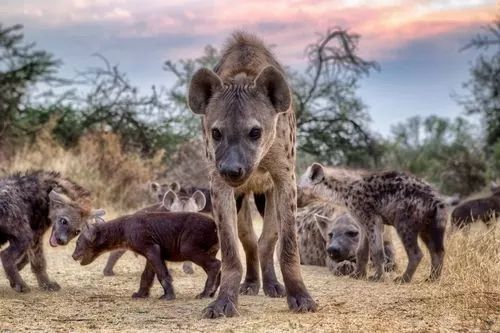
The Striped African Hyena
The striped African hyena is almost the same size as the brown hyena, just a little bit smaller. This hyena is usually found in North Africa, but some have been seen in West Africa (few), Ethiopia, Kenya and Tanzania. This hyena is much bigger than the Aardwolf and often confused because they both have stripes. An easy giveaway, if you are unaware of the big size difference, is the head:
The striped African hyena has a powerful head compared to the slender and longer muzzled (nose)
The mother striped African hyena can share her den with her adult daughters — the males have left to look for other females to breed with. This instinct is very strong in animals — they do not weaken the gene pool by inbreeding. Only bad things come from inbreeding – mental and physical problems and they instinctively know this.
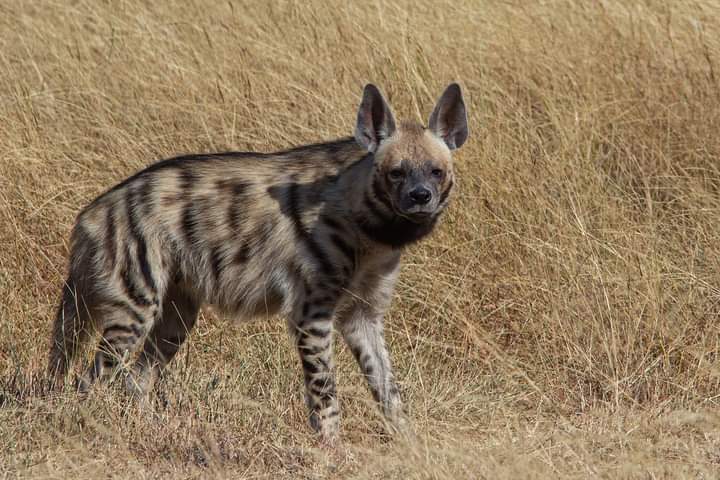
The striped hyena was previously thought to be solitary, but in fact they are sometimes found in clans (a group of hyenas), but they look for food on their own (like the Ethiopian wolf) and do not hunt or scavenge together.
Spotted hyenas
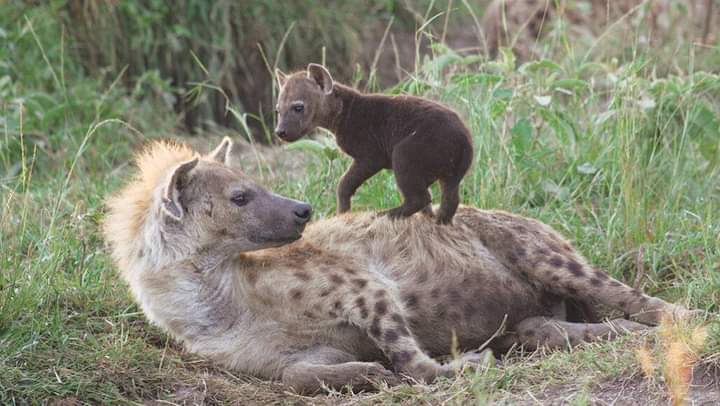
Spotted hyenas are excellent mothers, but they sometimes have to travel far to find food. Being in a matriarchal society is great for them, but times like this would be better if a mate returned with food, every now and again. That does not happen in their world, but luckily they have the most nutritious milk of any carnivore, and can leave their suckling cubs for up to a week — longer than any other baby animal.
Out of all the carnivores, Spotted hyenas have the largest groups (called ‘clans) and have the most complex social behaviours.
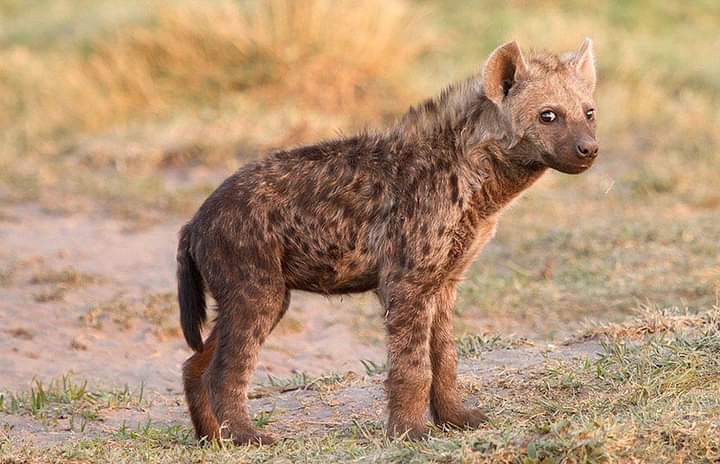
Spotted African hyenas are affectionately known as the ‘female warrior society’ — this is because spotted hyena clans are female-led. The females are in charge — they are more muscular, bigger and more aggressive than the males and this is because they have more testosterone (which is a male hormone).
This aggression starts from day one. Spotted hyena cubs are born fighters — literally, as the cubs are born with eyes open and armed with teeth. Females usually have twin births, and after a few weeks, only one is alive. This fighting and killing is worse between the cubs from the same sex — like female and the other female cub, or a male cub and another male cub. It can also be deadly between a female and male cub, but not as vicious.
Another point is that African hyenas prefer to use abandoned Aardvark burrows, and only the cubs live in them because the entrance is too narrow for any adults to get in, so the mother cannot stop that vicious and deadly fighting.

The hyenas (all) closest living relatives are the mongoose and African civet.
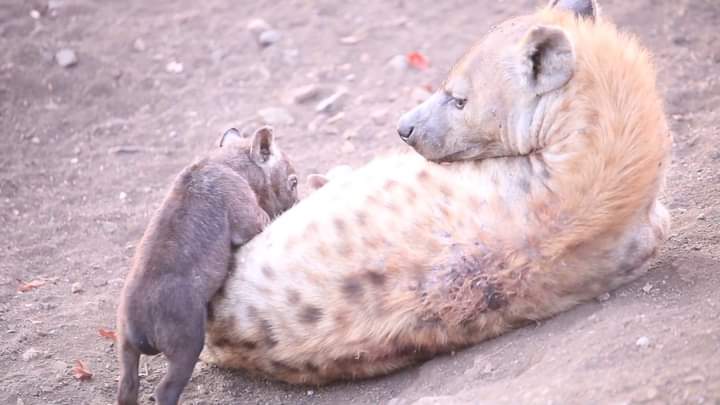
As said, the spotted African hyena usually gives birth to a pair of cubs, sometimes 1, 3, and rarely 4, and often only one survives the early weeks. The reason why they are born with open eyes and teeth is because of competition. Always wildlife’s battle, but this is a fight which usually affects the older animals — not newborns. Female spotted hyenas have only 2 teats.
Spotted African hyenas have the largest groups of individuals than any other meat-eating animal.
The spotted hyena can live 20 years in the wild, and reach 40 years in captivity.
Spotted hyena were once found throughout sub-Saharan Africa, and although they are listed by the IUCN as ‘Least concern’ — their numbers are shrinking and that is evident to where they are found today — like the lion, it is mainly found in the larger protected areas — mainly East Africa and southern Africa. This is because most of their prey is found in these areas — medium to large-sized prey. They still occur in West Africa, but in scattered and painfully few amounts.
The brown hyena
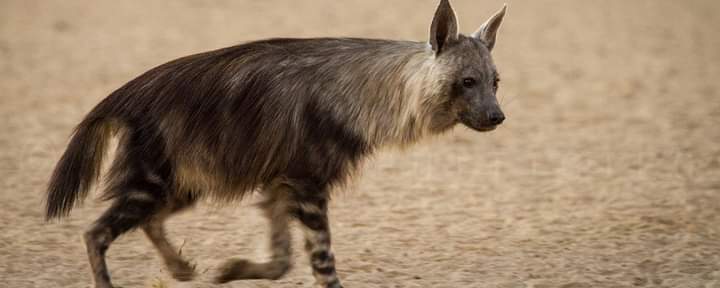
The brown hyena is primarily a scavenger, but they can supplement their diet with eggs, fruit, insects, desert truffle (a fungi), rodents and seldom small mammals. Why we say ‘seldom’ is because they are hopeless at hunting.
Brown hyenas are not that timid! They are shy and avoid human contact, or contact with any predator, but they are aggressive scavengers and it has been documented that they have chased healthy male leopards off their kill, and the leopards escaped by climbing a tree.
- The spotted hyena is more aggressive, but sometimes the brown hyena will steal from a lone spotted hyena.
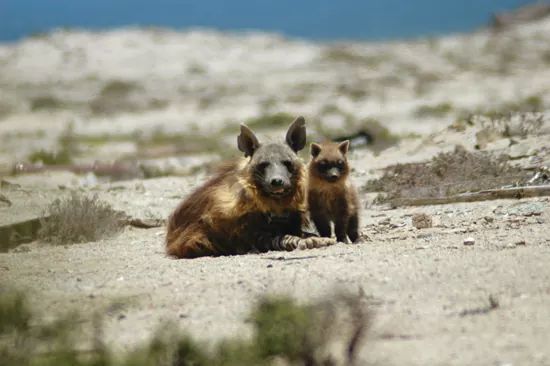
A brown hyena has 1 to 5 cubs and 4 tits.
The brown hyena is the rarest (as already said) of the hyenas, but also the most endangered. Due to its nocturnal habits and low population densities — they are sparsely spread out over large areas, so this has proven difficult to count. The IUCN has them classified as ‘near threatened’ and US Federal list has them listed as endangered.
The brown African hyena is not a hunter, and it is really sad when you see one hunted to be killed because it was falsely blamed for killing a cow or calf — it was likely seen eating off the carcass — it is mainly a scavenger.
Why we say ‘mainly’ is because they can also eat fruit, eggs and sometimes, really not often, they may kill something…
However, they are terrible hunters and they prefer small things — no bigger than a springhare.
Now, here is something that might confuse some, but this only happens in Namibia. A particular group of brown hyenas specialises in hunting seal pups. And that is their main diet.
Generally, brown African hyenas are not the scary predators, some people try to make others believe.
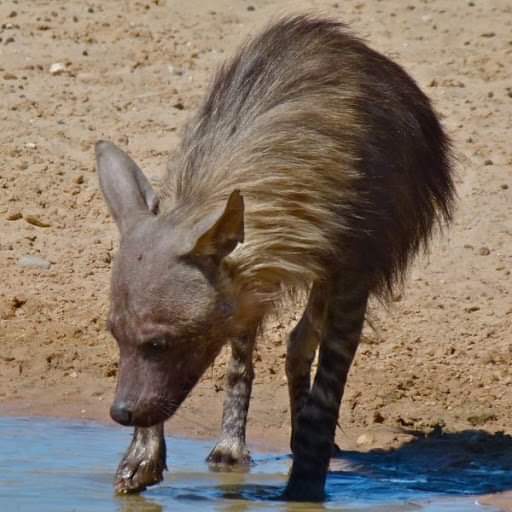
The brown hyena mainly inhabits the southwestern and drier savannah regions of southern Africa. — Particularly the southern regions of the Western Cape. This rare and beautiful hyena’s population has grown less and to the point that it is now an endangered animal grown smaller, especially when it is hunted for a totally false belief that some of its body parts can cure illnesses, make magic potions and other nonsense. They are like the leopard, in that they can live near humans and this makes them easier to hunt for those silly reasons.
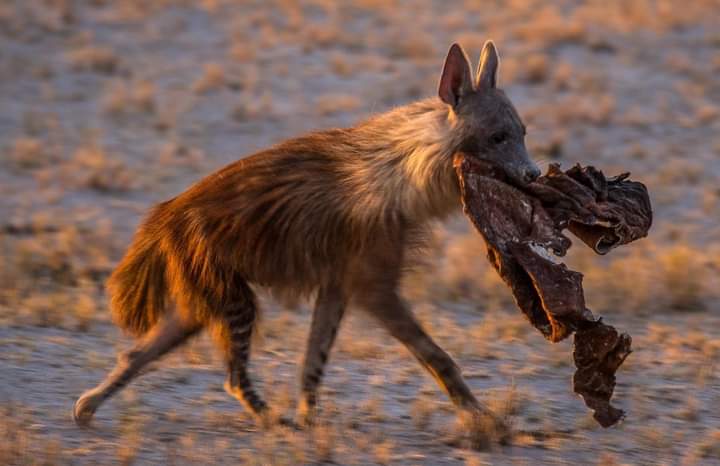
Brown hyenas travel distances to find their food — in one night, an average of 31 km (19 miles) is usual for these scavengers.
Brown hyenas are often seen wandering around the country on its own. So, we tend to believe these animals are solitary and they live alone. In fact, they live in clans, and as they are mainly scavengers, their food is not readily available and they have to travel distances every night to find food , and what is interesting, is that when they return to the den, and if there are pups, they return with food.
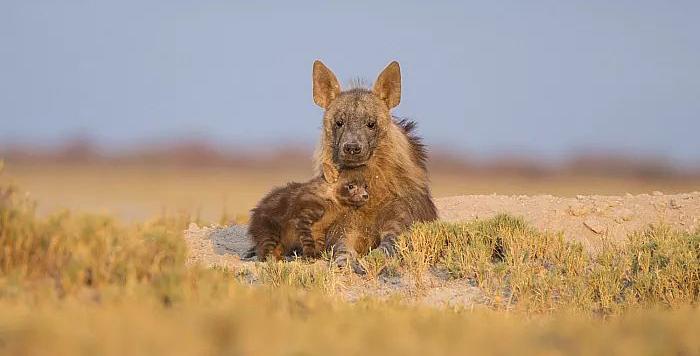
Brown hyenas live in clans, but each goes their separate way at sunrise or mainly, sunset (as nocturnal animals)
to look for food. Rarely, you may find a pair of adults foraging together. If the female has cubs, she will feed them only twice a day — sunrise and sunset.
Fascinating African Hyena Facts
You will want to make you stop and observe these curious animals a while longer:
- Hyenas are real-life Survivor players,
Hyenas form intricate social groups but here’s the fascinating fact, they are known to form allegiances with group members much to the likes of a Survivor game strategy.
Their social structure is intricate but relaxed, and they will break allegiances and form new ones as drama on the African savannah unfolds. They form allegiances around hunting, scavenging, territory and social status. Although active allegiance players, hyenas will regroup to aggressively protect their territory if collectively threatened by predators, making them also good and tight team players.
- Hyenas have white poo
Nothing goes to waste—hyenas are literally trash cans of the savannah as they devour every inch of their prey, nothing is left behind for the vultures! This makes hyena droppings easy to spot among the carnivore droppings. The amount of collagen consumed with bone, horn and hooves give the hyena’s dropping a white coloring compared to other carnivore droppings.
- Hyenas are scavengers and hunters, and excel at both
Hyenas are truly opportunistic and their hunting behavior depends on who their predator neighbors are. If they find themselves in an environment with plenty of other predators around, hyenas will tend to scavenge rather than hunt—they literally wait around to empty the neighborhood plates.
However, in an environment with few other main predators, hyenas turn into fierce hunters with impressive skill and speed.
- Hyenas are brave
Whether out of pure bravery or laziness to hunt for their own prey—hyenas show no fear or hesitation in trying to steal food. Even if it means risking their own lives with a pack of lions, encounters which hyenas may not survive. Still, the behavior persists making hyenas the perfect description of a chancer personality with some clear benefits for easy meals and African survival.
- Hyenas are sky-grazers
Look out for hyenas staring at the sky during the day. They are not daydreaming but rather taking cues from circling vultures as their own unique GPS system—using circling vultures to point them to kills.
- Hyenas are highly-sociable
The hyena has lived with villain-status since the Lion King, but zoologists across the world that study hyenas have been working hard on the re-branding of the hyena.
- Hyenas in large group
Folklore has not helped in establishing a less favorable public profile, with many myths telling us that hyenas are the steads of witches, and the evil of ancient society has reincarnated as hyenas. But, luckily, hyena scientists are showing us fascinating facts showing us that hyenas are as clever as primates, magnificent hunters, fierce protectors of their young, and highly sociable creatures, helping the official re-brand of the hyena.
- Hyenas are more closely related to cats than dogs
Although hyenas resemble canines in appearance and behavior, genetically they are more closely related to cats than dogs.
- Females dominate
To great animal kingdom exception, the female is the dominant gender in the hyena world. Female hyenas are easy to spot as they are in fact more muscular and aggressive. In a very peculiar case for the animal kingdom, female hyenas have testosterone levels up to three times higher than male hyenas.
There is even more confusion when trying to distinguish female and male hyenas, as the female spotted hyena has external genitalia.
Despite this strangeness, hyenas are however not hermaphrodites. Males do tend to suffer under tribes that become dominated by females. The male hyena’s social status drops even lower, making for a peculiar social grouping with young male African hyenas often leaving the group altogether.
- Proudly part of the ‘Ugly Five’
We have to admit that African hyenas aren’t exactly the most fine-looking of the African plains, and its looks saw it rated as one of Africa’s ‘Ugly Five’. Shaggy, untidy, sneaky, with supernatural status in African folklore and jaws that crush even buffalo in no time, they have perhaps rightfully earned their Ugly Five listing! Brown African hyenas are slightly more attractive with pointed ears and a nicer long coat.
Spotted African hyenas are not that fast, compared to a cheetah and a bit slower than a lioness and leopard, but they make up for it as they are great hunters and have incredible stamina.
African hyenas chase their prey to the point of exhaustion. That is mainly due to they way they are built. They have a sloping back, so does the wildebeest and that is why they can run for ages — but they cannot outrun the spotted African hyena over distance. The spotted African hyena can run 30 mph (48 kmh), but can only keep that top speed up for a short distance, and they are one of the savanna’s most effective hunters because of that fantastic stamina.
Spotted African hyenas are not skulking, cowardly scavengers which is what most people think of them. The truth is that they are incredibly intelligent and social animals and also brilliant hunters — making them one of the world’s top predators.
Young male spotted African hyena leave their mother at 2 years of age, while the females remain with their mother, younger brothers and sisters, aunts and grandmothers for life.
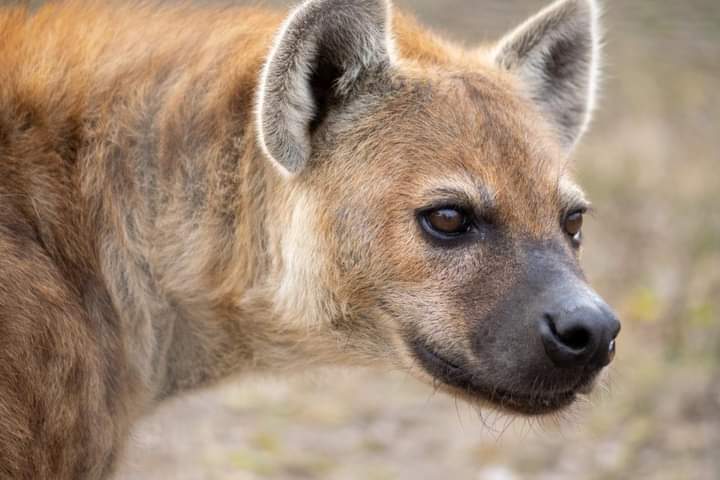
Spotted African hyenas are about 5 feet from their nose to tail and weigh about 150 pounds 68 kg). The females are usually heavier, but only by a bit about 4 pounds (1.8 kg).
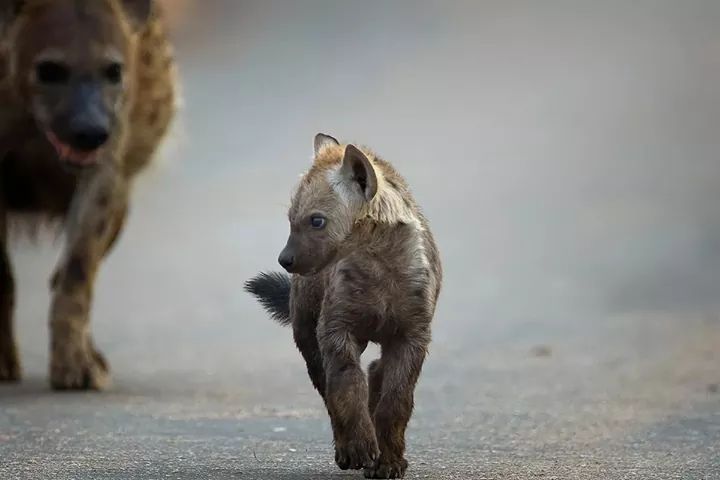
Spotted African hyena cubs can be little brats. They inherit their mother’s status, so if she is a high-ranking female within the clan, so are her cub/s and they will have the best choice of food and other privileges not available to low-ranking females. The low-ranking females pass on their lowly status to their cubs.

